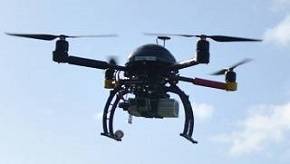UAV RULING: An industry expert issued a warning on the risk-mitigating unmanned air vehicle regulations. The European Aviation Safety Agency (EASA) put them forward.
They will only serve to create an area of uncertainty where users of smaller systems may carry out unregulated aerial work.
UAV Risk Levels
EASA’s most recent UAV regulations got produced as a technical opinion released in December 2015. The agency described it as a proportionate approach to drone regulation.
However, the head of operations at Resource Group UAS, expressed their concern. They said the new approach makes too many assumptions that small Unmanned Aerial Vehicles pose a relatively low level of risk.
A spokesperson for the company also said:
“The ‘open category’ proposed by EASA would allow for users to operate UAVs weighing 25kg (55lb) or less for whatever purpose. This is so long as safety’s ensured through compliance with operational limitations. It included mass limitations as a proxy of energy, product safety requirements, and a minimum set of operational rules.”
Civil Aviation Authority Permission
Unless the rules change, operators must obtain permission from the Civil Aviation Authority. They would need it to fly their UAVs commercially. No such official sanctions would be required for a UAV weighing less than 25kg if the proposed regulations get imposed.
 The risks are not only related to drone size, weight, and kinetic energy. These are the determining factors cited by EASA.
The risks are not only related to drone size, weight, and kinetic energy. These are the determining factors cited by EASA.
But operators should also have a requirement to obtain other assurances.
The chief implications of the open category ruling is that you would not need insurance or training. One spokesman said there is a whole area in the grey which is outside of the regulations.
He also expressed his concern saying: “Because you don’t need permission for the aerial work, does not make the risk any less. The mitigating factors do not mitigate the risk. This will legitimize those that work on the fringes.”
Under the broader EASA guidance, the United Kingdom might be able to continue enforcing a stricter policy. This may occur once the final ruling on the proposed changes get documented.
European Aviation Safety Agency (EASA)
EASA is the European Union Authority for aviation safety. The main activities of the organisation include the strategy and safety management.
They also issue the certification of aviation products. They oversee the approved organisations in EU Member States.
It first got established in 2002. The Agency staff comprises of more than 700 aviation experts and administrators from all EU Member States. The headquarters are in Cologne (Germany).
They have an office in Brussels and three international permanent representations in Washington (USA), Montreal (Canada) and Beijing (China).
EASA enjoys technical, financial and legal autonomy. They ensure the highest common level of safety protection for EU citizens and worldwide. This also helps to ensure the highest common level of environmental protection.
The European Aviation Safety Agency also plays a leading role within the EU External Aviation Policy. The Agency is a strong counterpart of other Aviation Authorities outside the EU (e.g. USA, Canada, and Brazil).
It is a major contributor to the export of the EU aviation standards worldwide. That helps to promote the free movement of EU aeronautical products, professionals, and services throughout the world.
ALSO IN THIS SECTION
Homes and Lifestyles Articles: News stories about rules for home and lifestyle regulations.
Drone Conviction: A landmark court case for conducting an illegal drone flight over the UK.
Photographing Police on Duty: They have no power to stop you filming officers on duty.

